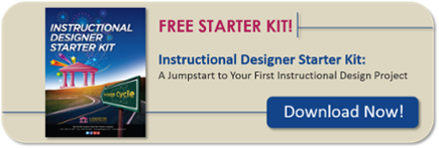If you’re a new course designer, you face many challenges. First, you may not have designed training before. You may not know how to do it, how long it will take, or where to begin. You may be feeling anxious and have limited knowledge of what training looks and sounds like.
Quite often, new course designers think that building a course involves putting together some PowerPoint slides on a specific subject and presenting the information in front of a group of people. In some cases, this is because it’s how they were taught in college or university. This type of design might work well in an academic setting, but in the business world we need to make sure we teach both knowledge and skill.
In Langevin’s Instructional Design for New Designers workshop, we teach the new designer a model to use as a roadmap when creating a training course. In addition to a solid instructional design process, it’s important for new designers to transform their mindset from educational (college/university experience) into skill–building or training (used in business).
Here are five ways to help you change your education mindset to a training mindset:
- Learn and apply an instructional systems design model. There are many models out there but they are generally the same. I tell my new designers to use a model that is easy to learn, easy to apply, and one you’ll stick with.
2. Think in terms of tasks, not topics. When meeting with subject–matter experts, focus on the tasks they complete versus the knowledge they have.
3. Use a task list to immediately identify what tasks need to be taught in your course. If someone asks you to design leadership training, ask what they want leaders to do that they are not currently doing?
4. Use a variety of methods that focus on the application of knowledge. When you design your training, use methods like role plays, case studies, and practice exercises to encourage your learners to not just remember new knowledge but, more importantly, to apply it.
5. Write performance-based objectives. When you focus on what learners will be able to do after training versus what they will know, you’ll be better prepared to design activities to make that happen.
Now that you know how to change your mindset from educational to training, you’ll set your learners up for success in their jobs!
Have you experienced any struggles in terms of how you think of training and instructional design? What did you do to change your mindset?

